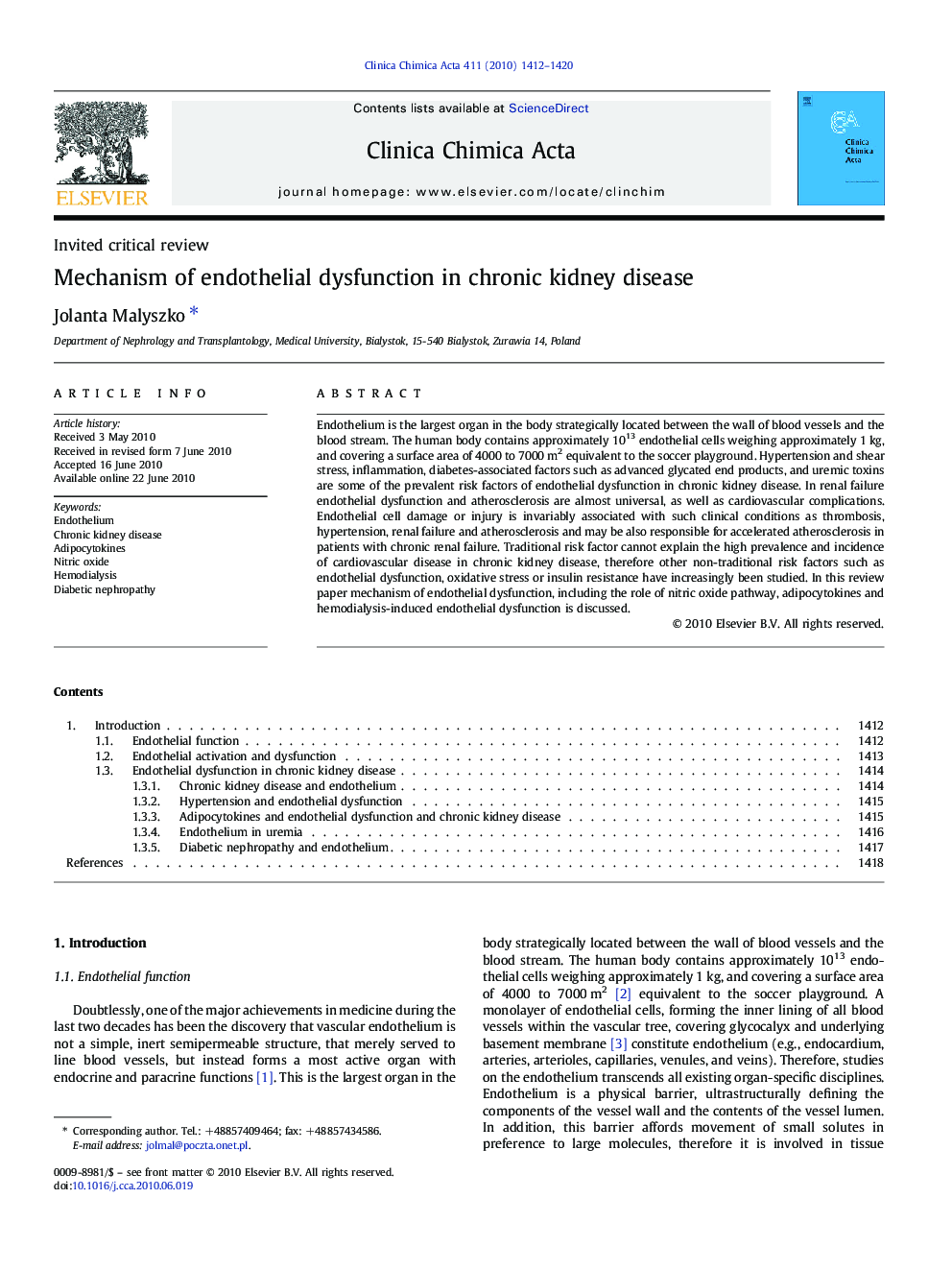| کد مقاله | کد نشریه | سال انتشار | مقاله انگلیسی | نسخه تمام متن |
|---|---|---|---|---|
| 1966912 | 1538711 | 2010 | 9 صفحه PDF | دانلود رایگان |

Endothelium is the largest organ in the body strategically located between the wall of blood vessels and the blood stream. The human body contains approximately 1013 endothelial cells weighing approximately 1 kg, and covering a surface area of 4000 to 7000 m2 equivalent to the soccer playground. Hypertension and shear stress, inflammation, diabetes-associated factors such as advanced glycated end products, and uremic toxins are some of the prevalent risk factors of endothelial dysfunction in chronic kidney disease. In renal failure endothelial dysfunction and atherosclerosis are almost universal, as well as cardiovascular complications. Endothelial cell damage or injury is invariably associated with such clinical conditions as thrombosis, hypertension, renal failure and atherosclerosis and may be also responsible for accelerated atherosclerosis in patients with chronic renal failure. Traditional risk factor cannot explain the high prevalence and incidence of cardiovascular disease in chronic kidney disease, therefore other non-traditional risk factors such as endothelial dysfunction, oxidative stress or insulin resistance have increasingly been studied. In this review paper mechanism of endothelial dysfunction, including the role of nitric oxide pathway, adipocytokines and hemodialysis-induced endothelial dysfunction is discussed.
Journal: Clinica Chimica Acta - Volume 411, Issues 19–20, 9 October 2010, Pages 1412–1420